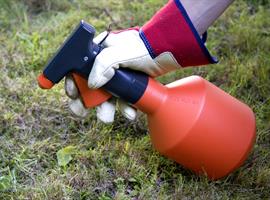Pest and weed control
Pest Management
Pest management is an important service provided to the community. Pest and weed invasion threaten the biodiversity of the City's conservation reserves and affects the function, community use and amenity of our public spaces and public infrastructure.
Integrated Pest Management
The City is committed to the responsible use and reduction of pesticides within the environment and is implementing a range of chemical-free initiatives to manage pests and weeds, a maintenance process generally referred to as Integrated Pest Management. The City has reduced reliance on chemicals while ensuring weeds and other pests are managed responsibly and that pesticides and herbicides are only used once all alternative options have been explored.
Methods for weed control
The City maintains large areas of land, including many facilities and assets. This means a variety of pest and weed control methods are needed to ensure effective control, including:
- Prevention: alternative designs and management processes making it harder for weeds and pests to establish and complete their life cycle
- Cultural controls: modifying a pest’s habitat to make it harder for weeds and pests to complete their life cycle and providing enhanced habitats for natural enemies or competitors
- Physical and mechanical controls: super-hot water steam, hand pulling, mechanical cutting, mulching and trapping of some feral animals
- Biological control: introducing natural enemies of weeds and pests, which may include conserving habitat for natural enemies or the use of biological sprays Chemical control: includes herbicides, fungicides, pesticides and some poison baits.
Given the scale of land managed by the City, chemical free alternatives are not always feasible, and pesticides may be selected for use. Only chemicals registered for use by the Australian Pesticides and Veterinary Medicines Authority are used. These are applied in a safe and responsible manner, in accordance with label directions and best practice as prescribed by the Western Australian Department of Health. The City also notifies residents of pesticide use through a range of channels and maintains a Pesticide Notification Register.
Natural
The City features unique bushlands, riverine areas, lakes and wetlands. Management and conservation of these areas is important to the City as they support sustainable ecosystems, support biodiversity and provide habitat for wildlife. The City may use a range of methods to minimise environmental weeds and pests in these areas, including:
Biological Control
- Introducing pest predators such as leaf hopper insects and/or other biological agents such as rust fungi to control certain invasive weeds.
Chemical Control
- The use of selective herbicides that do not affect native plants, where there are dense infestations of non-native grasses in bushland
- Spot-spraying of systemic herbicide for weeds with underground storage structures in the form of bulbs, corms and rhizomes, including Black Flag, Fumaria, Oxalis and Gazania
- Hand brushing of cut trunk bases with herbicide to control sprouting of woody weeds and feral grasses
- The use of organic herbicides including vinegar, pelargonic acid and neem seed oil are also being investigated to reduce reliance on synthetically derived or extracted herbicides such as Glyphosate.


